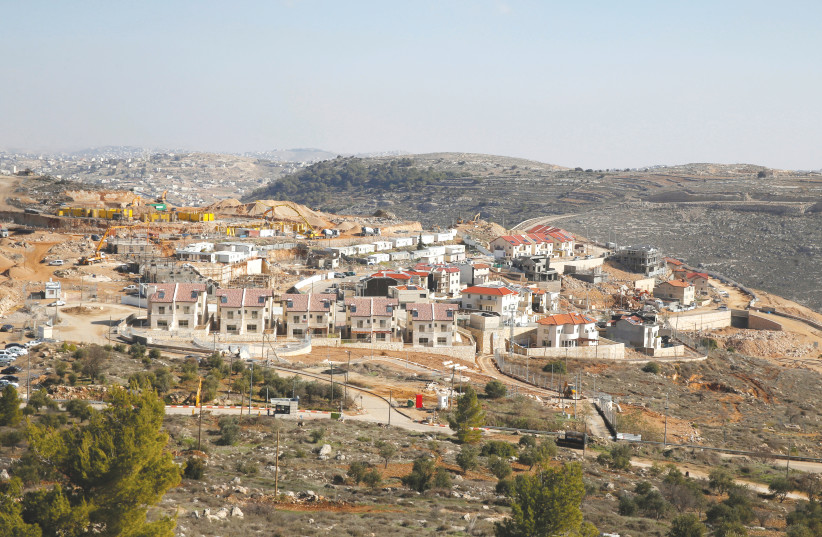Samaria Regional Council head Yossi Dagan is pushing to have one million settlers in his West Bank region by 2050, and has asked Prime Minister Benjamin Netanyahu to approve the plan.
“The plan, ‘a million for Samaria,’ confirmed that it is possible to place over a million [Israeli] residents in Samaria,” Dagan said in a letter he wrote to Netanyahu on Wednesday.
At present, there are only close to half a million Israelis in all West Bank settlements, and only four of those communities are large enough to be cities.
Should this plan come to fruition there would be at least 25 cities in Samaria by 2050, compared to Samaria’s one settler city of Ariel which has a population of some 20,000.
Among those cities would be the four northern Samaria settlements the IDF destroyed in 2005 as part of the Disengagement Plan.
The rebuilt Homesh settlement would have 36,217 residents, Sa-Nur would have 20,000 residents, and a combined city on the territory of the former Kadim and Ganim settlements would have 43,332 people.
Ariel would have 100,000 residents, the Itamar settlement would have 63,000, and Har Bracha would have 23,000. One new city, which would straddle the pre-1967 lines in the area of Rosh Ha’ayin, would have 133,000 residents.
Dagan sent the “a million for Samaria” initiative to Netanyahu’s office at the same time that Finance Minister Bezalel Smotrich (Religious Zionist Party) is advancing a plan to strengthen the West Bank settlements.

On Monday, Smotrich spoke specifically of strengthening the South Hebron Hills region.
Tension over settlement construction
The plan would likely increase tensions between Israel and the US, given that the Biden administration has persistently pressured Israel to halt settlement activity.
In his letter to Netanyahu, Dagan wrote that his plan was necessary because Samaria “is important to secure the existence of the State of Israel due to its strategic location in the heart of the country, on mountain ranges that have a commanding view” of the region.
The plan has been in the works for over a year and a half and was developed by a professional staff, with an eye to solving the housing crisis in the nearby Gush Dan region.
It would also help cement Israel’s hold on that region of Area C of the West Bank, which is under IDF military and civilian control.
Dagan believes that the application of sovereignty to Samaria and indeed to all of Area C – which was suspended in favor of the Abraham Accords – is just a matter of time.
“The Samaria region, located in the heart of the Land of Israel, is of historical and national importance and is the cradle of both the Bible and Israeli culture,” Dagan wrote.
All construction would be on state land, Dagan stated in his letter. The plan, which would expand existing settlements and establish new ones, would also include industrial areas, a hospital, medical centers, a civilian airport, and a railway.
Dagan is not the first person to push to vastly increase the settlement population. In 2018, the Yesha Council spoke of a plan to develop West Bank settlements to double the population within 10-15 years.
